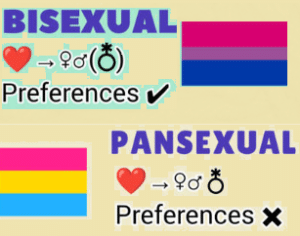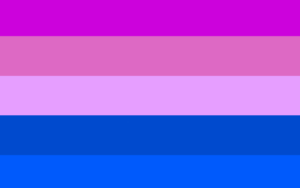If you make a purchase after clicking on one of our links, we may get a small commission.

Bisexuality and Pansexuality: Grasping the Distinctions and Similitudes
In the rich and diverse spectrum of human sexuality, bisexuality and pansexuality are two identities that frequently emerge in conversations about attraction and sexual orientation. While these terms share similarities, they also represent distinct experiences and perspectives on gender and attraction. Understanding these differences and overlaps is crucial for fostering inclusivity within the LGBTQ+ community and beyond. This article delves into what these terms mean, how they relate to each other, and why they are both essential components of sexual identity.

- Defining Bisexuality
Bisexuality is traditionally defined as the sexual or romantic attraction to two or more genders. Historically, this was often understood as attraction to both men and women. However, as society’s understanding of gender has expanded beyond the binary of male and female, so too has the definition of bisexuality. Today, many bisexual individuals emphasize that their attraction can extend to people of any gender identity, including non-binary, genderqueer, or genderfluid individuals.
The prefix “bi-” in bisexuality comes from the Latin word for “two,” which initially reflected the binary gender model. However, it’s important to note that bisexuality doesn’t imply an equal or exclusive attraction to just two genders. Rather, it signifies the capacity to be attracted to more than one gender. This can vary from person to person, with some bisexual individuals feeling a stronger attraction to one gender over others, while others may experience fluidity in their attractions.

- Defining Pansexuality,
meanwhile, is defined as the sexual, romantic, or emotional attraction to people regardless of their gender. The prefix “pan-” means “all,” indicating that pansexual individuals are open to relationships with people of any gender identity, including men, women, non-binary, genderqueer, and others. For many who identify as pansexual, the focus is on the individual themselves rather than their gender, which is either not a factor or a secondary consideration in their attraction.
Pansexuality is often described as an identity that explicitly rejects gender as a determinant in attraction. Some pansexual people view their orientation as inclusive of all genders, which aligns with their broader rejection of the gender binary. This perspective is sometimes what distinguishes pansexuality from bisexuality in discussions about these identities.
-
Overlap and Misconceptions:
The similarities between bisexuality and pansexuality can lead to confusion and misconceptions. One common misconception is that bisexuality inherently excludes non-binary or genderqueer individuals, which is not accurate. Many bisexual people are attracted to individuals across the gender spectrum, and bisexuality has been increasingly understood in inclusive terms.
Another misconception about bisexuality and pansexuality is that pansexuality is a more modern or progressive identity compared to bisexuality. While pansexuality does offer a different perspective, it is not necessarily more evolved. Both bisexuality and pansexuality are valid identities that reflect the complexity of human attraction. Some people might feel that one label fits them better than the other, while others might identify with both or switch between them as their understanding of their own sexuality evolves.
It’s also important to acknowledge that sexual identity is deeply personal and fluid for many people. Labels such as bisexuality and pansexuality provide language for individuals to articulate their experiences and find community, but they are not rigid categories. People’s attractions and the ways they describe them can change over time, and that’s perfectly normal.
-
The Importance of Representation:
Understanding and respecting the differences between bisexuality and pansexuality is crucial for combating the erasure of these identities within the LGBTQ+ community and the broader society. Bisexual individuals, in particular, have historically faced erasure and stigmatization, sometimes even within LGBTQ+ spaces. They are often unfairly stereotyped as being confused or indecisive, a misconception that undermines their legitimate and valid experiences.
Similarly, pansexual individuals may face challenges in having their identity recognized and respected, especially since the term is less widely understood. Misconceptions about pansexuality can lead to its dismissal or the erroneous belief that it is simply a rebranding of bisexuality. Both of these identities are distinct, and recognizing their differences helps to foster a more inclusive and supportive environment for all.
Additionally, these identities play a crucial role in promoting visibility and understanding within society. By recognizing and respecting the nuances of bisexuality and pansexuality, we contribute to a broader acceptance of the diverse ways in which people experience love and attraction. This visibility is essential for combating stigma and for ensuring that everyone has the freedom to express their identity without fear of discrimination or misunderstanding.
-
Final Opinion:
conclusion, bisexuality and pansexuality are two identities that, while overlapping in many ways, offer different perspectives on gender and attraction. Both are valid and important within the broader LGBTQ+ community, reflecting the diverse experiences of human sexuality. Understanding these identities is key to fostering inclusivity, combating stigma, and supporting individuals in living authentically. Whether someone identifies as bisexual, pansexual, or another orientation entirely, what matters most is the freedom to define and embrace their identity in a way that feels true to them.
